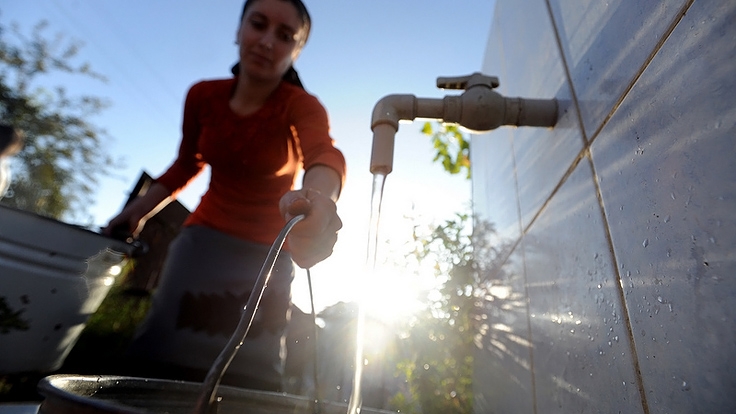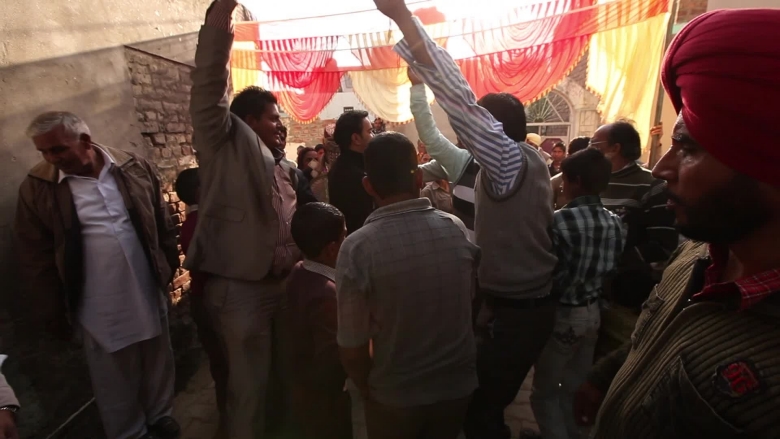Challenge
Much progress has been made in expanding water and sanitation services in the International Bank for Reconstruction and Development (IBRD) and the International Development Association (IDA) client countries. Nonetheless, 768 million people worldwide are still without access to improved water sources and 2.5 billion without access to safe sanitation. Only 64 percent of the world’s population now has improved sanitation access, a figure projected to increase only to 67 percent by 2015, well below the 75 percent aim in the Millennium Development Goals (MDGs).
However, even people who have access to water supply and sanitation services often have to cope with poor service provision. Improving utilities’ performance is crucial to ensure continuous service and lower levels of leakage, which affect both the quality and quantity of water available to end-users, the utilities’ revenue and its financial sustainability. Social and financial considerations must also be addressed in the design, planning and implementation of water and sanitation policies and facilities to keep the services affordable for the poorest. Tariff policies and strategic financial planning involving governments, service providers, end-users, and donors are key to ensure sustainable water and sanitation services for all.
Looking forward, these challenges will be exacerbated by growing competition for water resources as urban areas and populations grow, land use changes, and climate variability and change increases. All of these issues are at the core of the water-energy-food nexus.
Solution
The following elements define the World Bank’s approach:
Delivering development results. Offering a wide range of financial solutions, the Bank’s operations are tailored to the needs and capacities of specific countries. In fragile and affected states, the Bank together with partners ensures that vital services to the population are maintained or restored. For instance, in the new Republic of South Sudan, through the Bank administered Multi-Donor Trust-Fund for Southern Sudan (FY10-12), over 400,000 direct beneficiaries gained improved water supply and sanitation through the construction and rehabilitation of 586 water points. The project also involved support for establishment of a water committee and institutional strengthening in water management systems. In other countries, and with the ultimate goal to serve more people with sustainable water and sanitation services, Bank support is focused on longer-term efforts to strengthen institutional capacities, including at decentralized level, promote sustainable utilities for better service quality.
Innovative solutions to complex situations. In connecting global knowledge and operational experience, the Bank brings lessons and emerging good practices learned in one country or region to other parts of the world. For example, with support from the Water Partnership Program (WPP), the Bank has championed the innovative Integrated Urban Water Management (IUWM) approach that was piloted in seven cities in Latin America over the last three years through investments and technical support. An IUWM approach was also recently used in Azerbaijan. IUWM was the focus of the 2012 World Bank’s flagship report for the water sector.
Analysis and advisory services. Knowledge production and dissemination and cross-support activities allow a deeper understanding of crosscutting issues such as decentralization, community participation, private sector participation, as well as a renewed focus on countries where water may constrain growth. Key priorities include promoting inclusive, pro-poor solutions and enhancing gender-balanced interventions, sustainable financing at project and sector level and climate change impacts with a view to align the WSS portfolio with the new Bank corporate goals – to end extreme poverty by 2030 and build shared prosperity for the bottom 40%, while ensuring sustainability. For instance, the Water and Sanitation Program (WSP), a multi-donor partnership administered by the Bank, gathered evidence from recent projects demonstrating that an enormous market potential remains untapped, representing business opportunities for the private sector, which will help bridge the investment gap, unlock service expansion to the poor and accelerate the water and sanitation targets achievement.
Value for money. The World Bank helps governments improve their monitoring and evaluation systems, in order to enhance transparency and accountability and report on results and progress. For instance, at the utility level, the International Benchmarking Network (IBNET) initiative maintains a database including standardized performance indicators for 2,000 water and sanitation utilities, covering more than a quarter of the world’s urban population in 85 countries, and provides customized technical assistance to utilities. At the government level, public expenditure reviews (PERs) are undertaken to help the Bank’s clients assess the effectiveness of public spending in the water and sanitation sector and prioritize policy options within and across sectors. An assessment of 15 PERs conducted in Sub-Saharan Africa highlighted capacity constraints and incomplete sector reform, opening the door for improvement in future activities.


